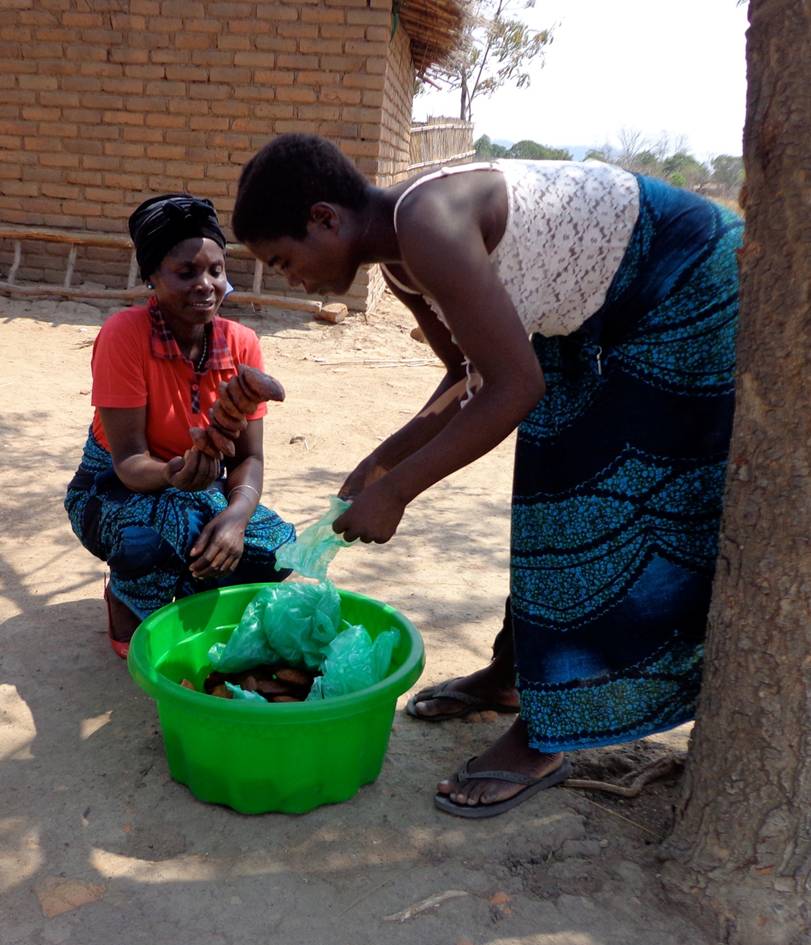“Can you tell me a little more about the strengths of your group?”
[Silence.]
Hmmm… how can I rephrase this? “What do you feel you have accomplished?”
[Silence.]
After a robust 30-minute discussion about challenges, I thought I’d struck luck with a verbose crowd. But when I asked about successes, I could hear distant chickens clucking instead of productive chatter.
I was stumped.
I manage a project at the Elizabeth Glaser Pediatric AIDS Foundation that provides technical assistance to six community-based organizations (CBOs) throughout Malawi. While each CBO has a slightly different mission and target population, they all seek to prevent mother-to-child-transmission of HIV using approaches conducive to the communities they serve. On this particular day I was meeting a group of mothers that convenes once per week to discuss relevant health topics under the guidance of one of my CBOs. My objective for this meeting was to identify best practices and success stories that the CBO could use to raise their visibility. So, I pushed further in my pursuit of positivity.
“What have you learned from this group? Why do you keep coming back each week?”
As almost if to intentionally interrupt the continued silence, someone from the nearby village walked up to our meeting spot under a large tree to purchase a mandasi, Malawi’s version of a Dunkin’ Donuts munchkin. A woman excused herself to serve the patron.
In an effort to buy time to think about how I would again rephrase my question about extricating successes from this group, I inquired about the mandasi. After a turbulent drive down an obscure dirt path, I felt far removed from civilization and wondered aloud how people knew to come here for a breakfast treat. One of the women explained that she bakes the snacks for their weekly meetings using money from their village bank and the neighbors have grown accustomed to the bake sale.
After a series of questions about the village bank and its relation to the mandasis, I learned that each member of the group contributes a small amount of money every month to the village bank. Women can borrow the money to fulfill small business pursuits and they return their loan with a 20 percent interest rate. They use the communal accrual to pay transport costs for pregnant women to attend antenatal care (ANC) visits or to deliver their babies at a health center. Without this ancillary flexible income, women rarely attend their ANC visits and they are more likely to undergo a risky delivery at home. They are also unlikely to be tested for HIV and can unknowingly pass the virus on to their infants.
As you might imagine, I was stunned to hear about the village bank model.
When I asked about successes, I got silence. But when I asked about bite-sized donuts, I learned about a thriving, self-sufficient start-up micro-financing program that supports small-scale entrepreneurial pursuits.
I continued my discussion with the women about the importance of recognizing and celebrating successes, a topic discussed during GHC training. I emphasized to this group that their ability to address some of their financial constraints through their village bank project was exemplary. We talked briefly about why it’s advantageous to understand what’s working well and to capitalize on victories.
Admittedly, success can be hard to spot. To borrow a favorite quote from Alexander Graham Bell, “When one door closes, another opens; but we often look so long and so regretfully upon the closed door that we do not see the one which has opened for us.”
Throughout my career and especially since moving halfway across the world in pursuit of contributing to global health equity, I’ve encountered many closed doors and it’s often easier to focus my energy and efforts on scrambling to pry them open. This often feels counterproductive and stressful. Therefore, sitting in the shade of a tree while unearthing a brilliant story about an innovative community of mothers, I welcomed the reminder to celebrate wins – whether they are as small as a donut-hole or as large as preventing a mother-to-child-transmission of HIV.



Keeping looking for those doughnut holes Sam, sometimes they lead to bigger and better things for sure!